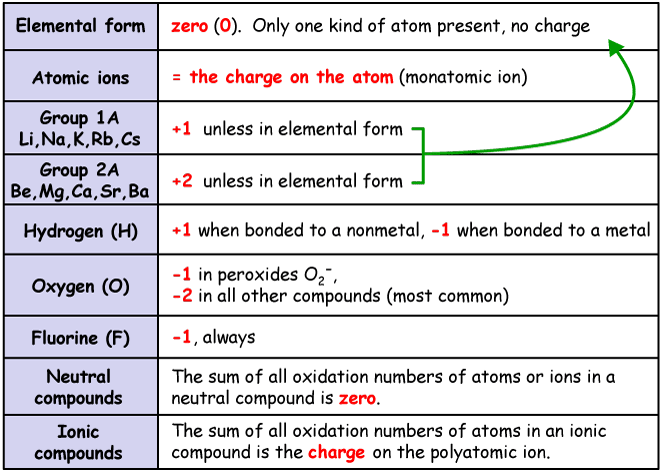oxidation number

source : compound chem.com
Oxidation number of an element in a particular compound is the no. of e’s lost or gained by the element during its change from free state to that compound.
General Rules for Assigning Oxidation Number-
- In free state Oxidation number of an element is zero.
- Oxi. no. can be zero or +ve or -ve
- Oxi. no. of an ion is equal to the charge on that ion.
Ex. Na+=+1, Mg++=+2, Al+++=+3, O– – =–2
- The algebric sum of Oxi. no. of all the elements in a compound is equal to zero.
Ex. KMnO4
Oxi. No. of K + Oxi No. of Mn +4xO.No. of Oxy= 0
- In combined state, Oxi. no. of
F is always –1
Oxy is –2, In peroxides is –1, In F2O, Oxi. no. of
Oxy is –2
Oxi. no. of metal is always positive
Oxi. no. of alkali metal is always +1
Oxi. no. alkaline earthmetal is always +2
- Oxi. no. of halogens (except F) is generally -1 but it may be +1,+3,+5,+7
- The algebric sum of Oxidation number of elements in an ion is equal to the net charge on that ion.
Ex. SO4– –
o.no. of S+ 4×0.No. of oxy= –2
- Hydrogen has two possible oxidation numbers: +1 and -1Hydrogen has an oxi.no. of +1 when it is bonded to nonmetals, which are highlighted on the right side of the following periodic table.For the compound hydrochloric acid, hydrogen is bonded to chlorine, a nonmetal, so the oxi.no. of hydrogen is +1.
Hydrogen has an oxi.no.of -1 when it is bonded to a metal.
For the compound sodium hydride, hydrogen is bonded to sodium, which is a metal, so the oxidation number of hydrogen is -1.
- Variable Oxidation number is mostly shown by transition elements & p-block elements.
- Oxi. no. of Sn = +2, +4
Oxi. no. of As
Oxi. no. of Fe = +2, +3
Oxi. no. of Cu = +1,+2
Oxi. no. of Mn = +1,+2,+3,+4,+5,+6,+7







